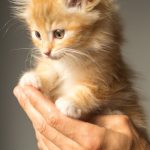Unveiling the Enigmatic Lykoi Cat: A Guide to Care, Health, and Personality
The Lykoi, pronounced “lie-koi,” emerges as a distinctive feline with a wild spirit, often opting for self-assigned missions over idle lounging. If you chance upon a Lykoi, a cat resembling a miniature werewolf, consider yourself fortunate. The name itself, “Lykoi,” translates to “wolf cat” in Greek, perfectly encapsulating their unique appearance.
Physical Characteristics: Despite their sparsely furred bodies, Lykoi cats share similarities in size and weight with other small to medium-sized breeds. Standing 8–10 inches tall and weighing 6–12 pounds, they boast a roan coat pattern, a blend of colored and white hairs with solid-colored faces, tails, and legs. Their seemingly coarse fur is surprisingly smooth to the touch, growing in patches without an undercoat.
Caring for a Lykoi: Being partially hairless, Lykoi cats require special care. Their unique appearance results from a genetic condition called hypotrichosis, leading to thin hair. Regular baths are necessary to prevent oily skin, and though they may shed less, occasional molting, termed “wolfing out,” can occur.
Health Considerations: Established in 2011 by veterinarian Johnny Gobble, the Lykoi breed is generally healthy, with an average lifespan of 12–15 years. While they are susceptible to some health conditions, careful breeding practices have minimized risks. One condition associated with their unique fur is lymphocytic mural folliculitis, causing scaly skin. Dental disease is a risk for all cats, emphasizing the importance of regular veterinary checkups.
Nutritional Needs: Lykoi cats should be fed a high-quality diet meeting nutritional guidelines for their life stage. Kittens require growth-formulated food, transitioning to adult food around 1 year old. Portion control is crucial to prevent weight gain, with feeding schedules and mealtime enrichment enhancing their well-being.
Behavior and Training: Lykoi cats exhibit a friendly yet adventurous personality, rooted in their feral cat ancestry. Their prey drive is strong, making them lively companions. Training may involve treats, toys, and praise, but due to their unique skin and high prey drive, leash and harness training may not be ideal.
Grooming Guide: Contrary to assumptions, Lykoi cats are not low-maintenance. Regular brushing is necessary to manage shedding and prevent matting. Skin care involves occasional baths with cat-specific shampoo, ensuring they are not bathed too frequently to avoid skin issues. Eyes, ears, and dental care complete their grooming routine.
Considerations for Pet Parents: The ideal home for a Lykoi cat appreciates their active and curious nature. Regular play and mental stimulation are essential, and caution is advised in households with small children or timid pets. Understanding their unique grooming needs and embracing their distinctive appearance contributes to a harmonious life with a Lykoi.
FAQs:
- Why are Lykoi cats called “wolf cats” or “werewolf cats?” The name stems from the Greek word for wolf, “lycos” or “lycus,” reflecting their werewolf-like appearance and molting habits.
- Are Lykoi cats high-maintenance? Yes, they require regular brushing, occasional baths, and skin checks due to their unique coat and skin.
- How much is a Lykoi cat? Prices typically start at around $1,000.
Embrace the mystique of the Lykoi cat, a captivating blend of wild and domestic, and provide the care, attention, and understanding they deserve in your feline-friendly home.


